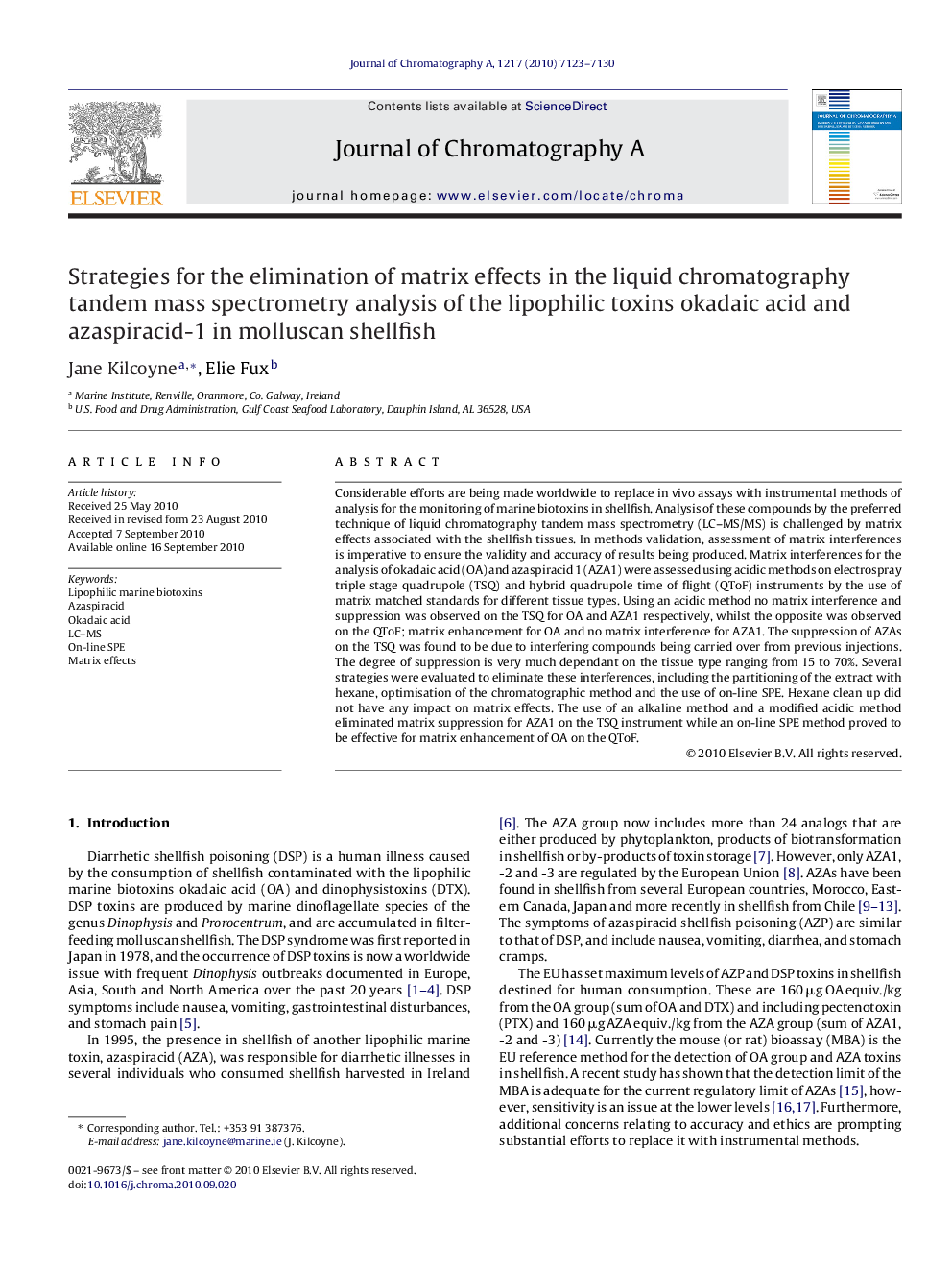| Article ID | Journal | Published Year | Pages | File Type |
|---|---|---|---|---|
| 1203924 | Journal of Chromatography A | 2010 | 8 Pages |
Considerable efforts are being made worldwide to replace in vivo assays with instrumental methods of analysis for the monitoring of marine biotoxins in shellfish. Analysis of these compounds by the preferred technique of liquid chromatography tandem mass spectrometry (LC–MS/MS) is challenged by matrix effects associated with the shellfish tissues. In methods validation, assessment of matrix interferences is imperative to ensure the validity and accuracy of results being produced. Matrix interferences for the analysis of okadaic acid (OA) and azaspiracid 1 (AZA1) were assessed using acidic methods on electrospray triple stage quadrupole (TSQ) and hybrid quadrupole time of flight (QToF) instruments by the use of matrix matched standards for different tissue types. Using an acidic method no matrix interference and suppression was observed on the TSQ for OA and AZA1 respectively, whilst the opposite was observed on the QToF; matrix enhancement for OA and no matrix interference for AZA1. The suppression of AZAs on the TSQ was found to be due to interfering compounds being carried over from previous injections. The degree of suppression is very much dependant on the tissue type ranging from 15 to 70%. Several strategies were evaluated to eliminate these interferences, including the partitioning of the extract with hexane, optimisation of the chromatographic method and the use of on-line SPE. Hexane clean up did not have any impact on matrix effects. The use of an alkaline method and a modified acidic method eliminated matrix suppression for AZA1 on the TSQ instrument while an on-line SPE method proved to be effective for matrix enhancement of OA on the QToF.
